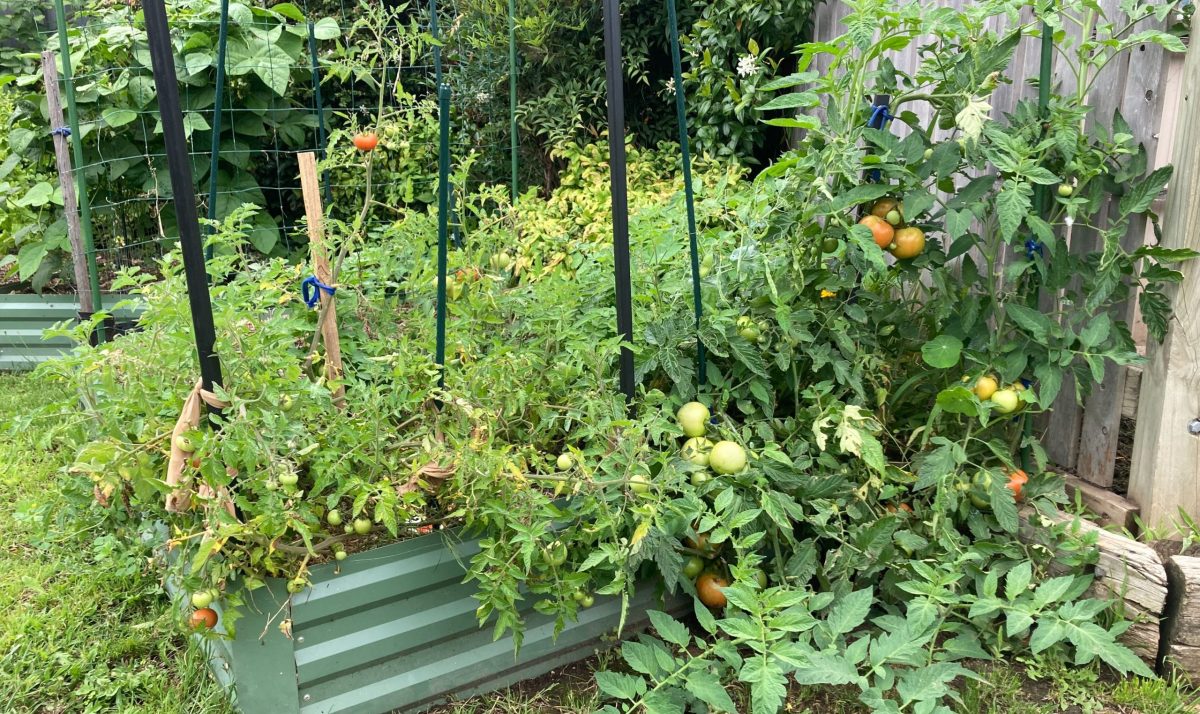It may be time to remove the seedling spacers and introduce a little clutter into the garden. Photo: Helen Ross.
Talk to any home gardener about their technique and they'll probably complain at some point about meticulously sowing every single seed. Carefully measuring and preparing every single hole and furrow in the soil can be quite a tedious task for even the most dedicated hobbyist.
Luckily for gardeners looking forward to their next planting, the perfectly trimmed, perfectly planted plots are slowly being cleared away, to be replaced by “chaos gardening” that's colorful, biodiverse and above all, easy to maintain.
This isn't anything new — the phrase was first coined on TikTok — but there are plenty of “lazy” growers who have been growing this way for years.
Simply put, a chaos garden is an amalgamation of different plants that have been thrown into the ground as seeds without much thought to their location.
This combines companion planting, which pairs varieties that protect each other from pests and disease, enhance flavor and improve soil health, and intercropping, which encourages successive seeding cycles and maximises space by planting smaller plants between larger ones.
Aside from reducing the gardener's workload, chaos gardens have many other benefits.
These little rebel flower beds not only look very natural, but actually behave in a natural way, attracting insects, birds and other wildlife, increasing biodiversity and resulting in more abundant harvests.
They can be grown in just about any space, including in-ground gardens, raised beds, greenhouses, and even small pots and containers.
This is also a great way to take advantage of seeds that have been long forgotten: forget about the expiration date, throw in some seeds and see what happens.

Chaos gardening does away with rigid growing patterns and embraces the wilder characteristics of nature, allowing plants to thrive without boundaries. Photo: John Coleman.
For those wanting to create their own chaos garden, the key to a healthy, low-maintenance ecosystem is choosing the right plants, says Dr Lo MacFarlane from the University of Canberra. Consider planting a rich mix of beneficial herbs, flowers and vegetables, but make sure you choose varieties that will thrive in your area.
“A little research can go a long way,” Dr. Lo says.
“Get in touch with your local nurseries, community gardens, seed savers, traditional gardeners and local landcare and environmental organisations. They will be able to tell you what they are growing, which varieties are best suited to your climate and why.”
Soil is also important. Most seedlings need well-drained, nutrient-rich soil to grow in. A mix of potting soil, potting soil, and compost will generally suffice.
Once your soil is prepared and you've chosen what you're going to plant, the fun begins: collect your seeds and mix them together in one container, then scatter them to your heart's content, encourage them to germinate with a little warm water, and sit back and watch the chaos unfold.
Depending on what seeds you planted, you may need to thin out the new growth periodically to avoid overcrowding. Don't worry, just toss it in the compost.
By sowing, harvesting and thinning each season, you will eventually have a cyclical garden that will grow naturally with little effort.
Dr Lo's final point is to be a little more tolerant when it comes to weeds and edible native plants.
“Many weeds are edible and provide their own benefits to the garden,” she says.
“For example, dandelions and pussy willows are great in salads. Just be sure to get rid of any invasive species.”
“There are some wonderful native plants, like the murnong (yam daisy), that taste great, look great and require very little care. Just ask people in your community and you're sure to find something you can plant in your own garden.”
And remember – even if you don’t succeed at first, try again and again. Every Chaos Garden is its own experiment, so make note of small difficulties and use them to improve your next sowing cycle.
Good luck!
Original article published by Morgan Kenyon of About Regional.


